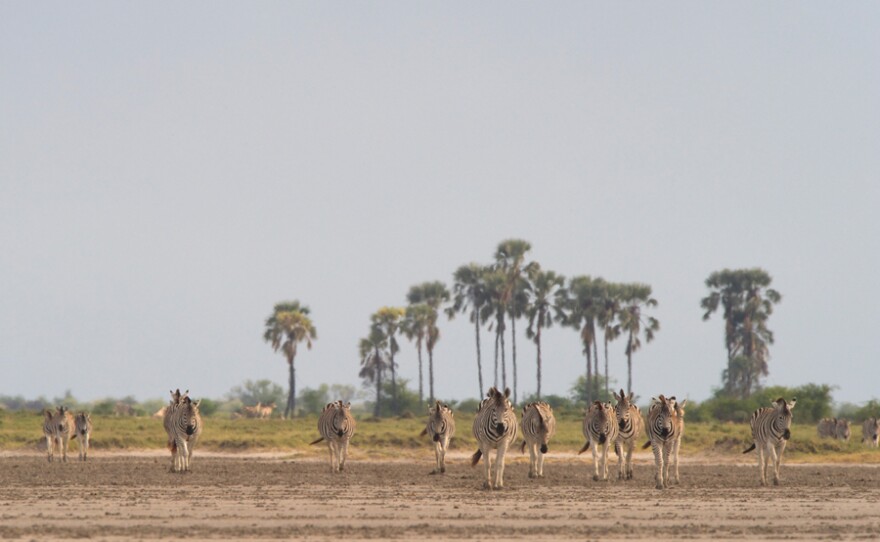Botswana’s Makgadikgadi Pans are home to the largest zebra population in southern Africa, but it’s not an easy life. There is no permanent water in the arid salt pans, so thousands of zebras are dependent on isolated summer rains for their survival. Fleeting thundershowers produce islands of grass scattered across the otherwise barren landscape, where the herds gather to graze before moving on to fresh pastures. But when the seasonal storms end, the striped nomads know it is time to leave home.





Infographic: The Plains Zebra
The plains zebra, by far the most common and geographically widespread, is featured in the film "Great Zebra Exodus." Learn about zebra anatomy, diet, habitat, and social structure.
How strong family ties help the zebras overcome obstacles in their epic search for food and water is revealed when NATURE follows the "Great Zebra Exodus," airing on PBS (check local listings). After broadcast, the program will stream at pbs.org/nature.
Zebras observe a close social hierarchy in which a single stallion is the head of each family unit. He shares a protective and long-lasting bond with his harem of mares and their foals.
But not all his wives are equal. The most dominant mare always takes the lead as the family groups march across the pans. The rest fall in line according to their rank with the ever-vigilant stallion bringing up the rear. These animals will walk more than 2500 miles a year to feed themselves.
For one young stallion and his lead mare, the loyalty and patience shown to their first foal, born lame, is evident from the day of its birth. They walk slowly across the pans so the young zebra can keep up, and let him stand in his mother’s shade for relief from the hot sun. When they must finally leave the foal on his own as they search of water, he is not abandoned. The devoted parents later return to his side.
The dry season signals the start of the zebras’ long trek west to the Boteti River for fresh drinking water. Their departure is watched by meerkat families, desert specialists who remain in the parched and sunbaked pans, watching the zebras come and go. At the river and along the way is other wildlife, including elephants and birds, drawn to the life-giving water. Dust, hunger, exhaustion and lions lie in wait for all.
Nearly 20,000 striped nomads forage along the shore until there’s nothing left to eat. Water is still plentiful, but now they must travel further and further from the river to reach adequate grazing before trudging miles back to quench their thirst.
It’s a grueling routine, especially for the pregnant mares and older family members, until finally the storm clouds return and the dry season ends. The zebras can now head home where they will welcome newborn foals to their families.
The birth of one new foal ends in tragedy. Out on the pans, when a stallion dies, his harem is acquired by a new stallion, who becomes the new head of their family unit. However, any pregnant mare in that group is carrying a doomed foal.
In a rare and poignant scene, the filmmakers show what happens when a mare gives birth to such a foal, showing a dark and frightening side to the stallion’s otherwise strong ties to his harem.
Aware he’s not the father, the new family stallion instinctively attacks and kills the newborn. Though the mare fights for her foal, its death is inevitable. Survival is difficult in this harsh environment, and the new stallion cannot afford to dedicate his energies to a foal sired by another.
When the dry season returns, all the zebra families will set out again for the river. Theirs is a tale of loyalty and sacrifice, of home and exile, and death and new life against the backdrop of one of Africa’s most surreal landscapes.
NATURE is on Facebook, and you can follow @PBSNature on Twitter.
Great Zebra Exodus Preview
"One of the greatest migration stories of the natural world
The Zebra of Botswana's Saltpans
"There is no permanent water in Botswana’s Makgadikgadi Pans. It is only seasonal rains that make home habitable for the thousands of zebra that make their home in the saltpans. When the dry season begins






